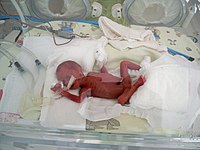
Photo from wikipedia
BackgroundThe common vole (Microtus arvalis) is typically the wild mammal species driving regulatory pesticide risk assessment (RA) in Europe. The risk assessment endpoint for wild mammals is taken from the… Click to show full abstract
BackgroundThe common vole (Microtus arvalis) is typically the wild mammal species driving regulatory pesticide risk assessment (RA) in Europe. The risk assessment endpoint for wild mammals is taken from the studies conducted mainly with rodents for the toxicological part of the dossier. Body weight effects in these studies are often driving the selection of the No Observed Adverse Effect Level (NOAEL) used for wildlife risk assessment. Thus, assessing body weight effects in voles very frequently constitutes a key scenario in the RA. Although many studies on ecology, reproductive biology, population genetics, and other aspects of common voles are available, the relevance of body weight for their survival and reproduction has not yet been specifically analysed. There is also little guidance on how to quantitatively deal with body weight effects in the regulatory risk assessment of pesticides.ResultsWe evaluated the population relevance of body weight effects on voles by analysis of a dataset from a multi-annual study with repeated life-trapping and genotyping, and have correlated body weight with reproductive success, taking account of the seasonality of body weight. Body weight and growth were similar between reproducing and non-reproducing females. The number of confirmed offspring indicated no correlation with parental body weight. Reproductive success of the voles was mainly influenced by the date of birth, i.e., animals born in spring have a higher chance to reproduce. Body weight did not correlate with life span during most of the year, except for autumn. Animals weighing < 15 g in October did not survive winter.ConclusionsThese results demonstrate no detectable influence of common vole body weight on reproductive success and survival during most times of the year. The results of this study suggest that, additional to the hazard information from toxicity studies, ecological information on voles as a typical species of concern should be considered in the regulatory risk assessment of pesticides.
Journal Title: Environmental Sciences Europe
Year Published: 2019
Link to full text (if available)
Share on Social Media: Sign Up to like & get
recommendations!